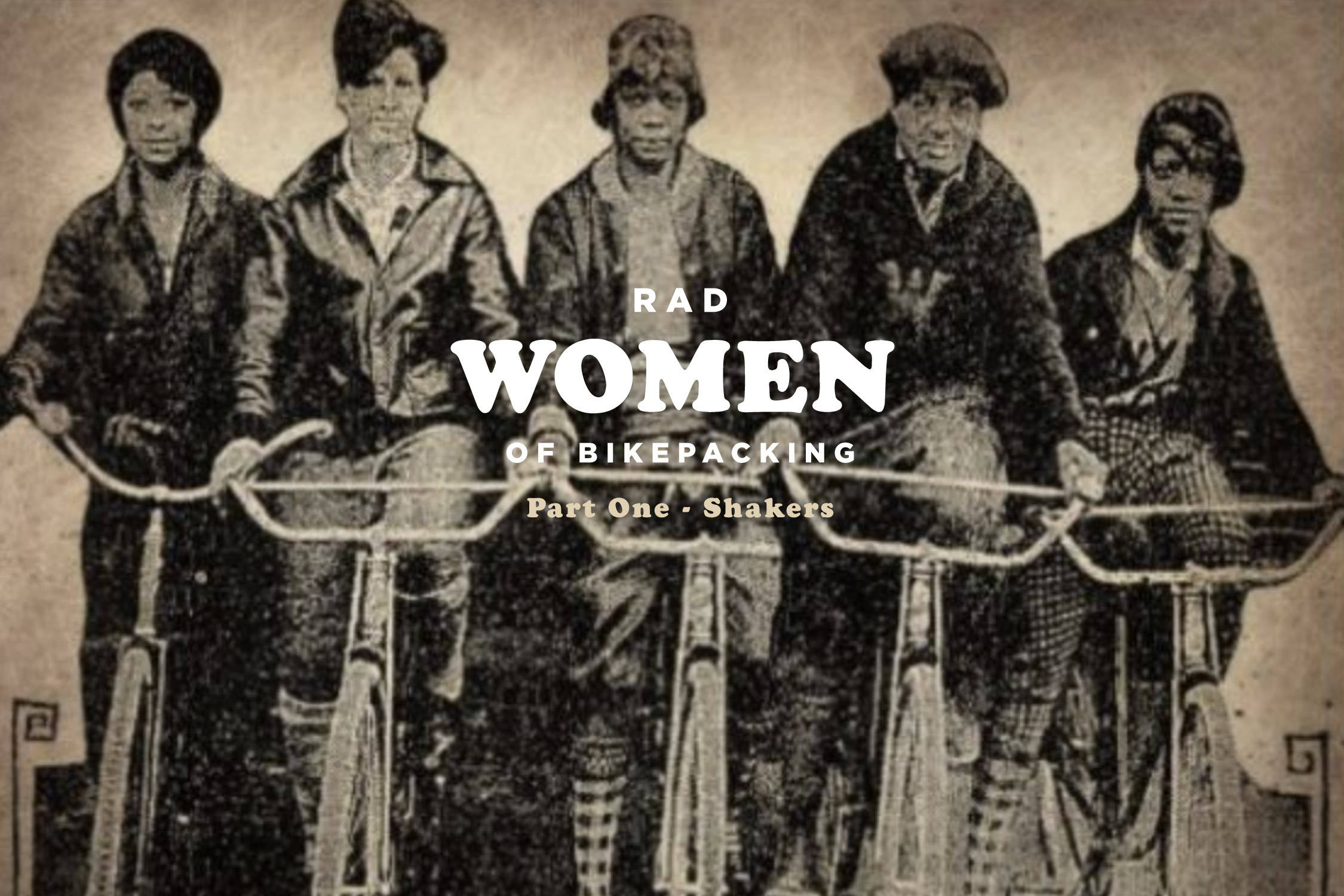Rad Women of Bikepacking: Part One – Shakers
Share This
We’re kicking off our Rad Women of Bikepacking series with a little bit of history. Since the dawn of the pneumatic bike tire, women have been venturing off the beaten path by bike. From the 19th century to today, the 10 intrepid women in this list inspire and challenge us to ride further and be better…
March kicks off Women’s History Month and to celebrate, we’re honoring the women—past and present—who have shaped the bikepacking community and the cycling industry at large. Each week, we’ll feature some of the movers, shakers, and makers who inspire us, both on and off the bike. This week, we’re going back in time to revisit the stories of 10 amazing women who shook the status quo with their two-wheeled pursuits.
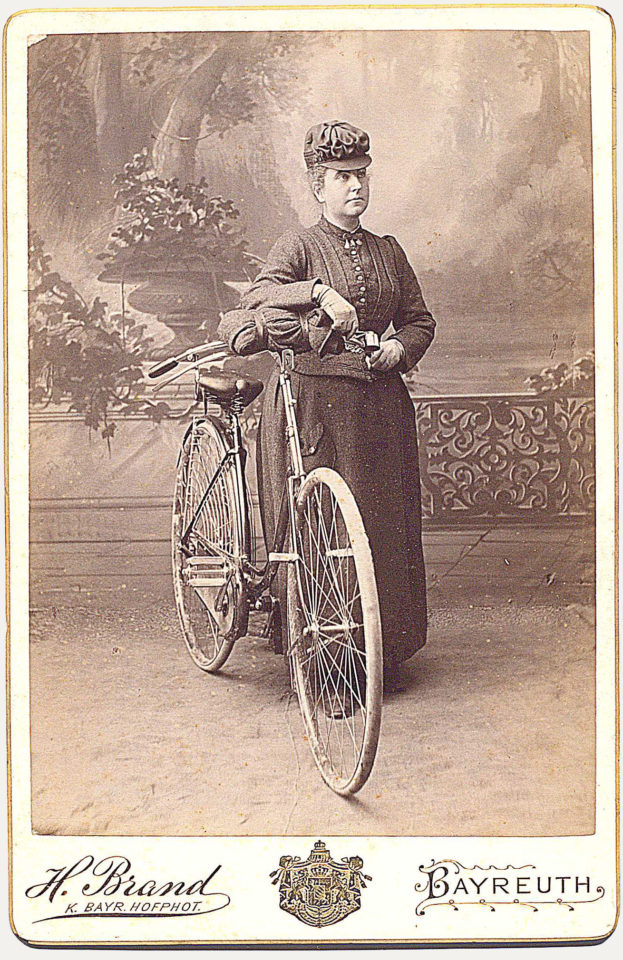
Fanny Bullock Workman
1859 – 1925, Massachusetts
Fanny Bullock might have been born into wealth, but that didn’t mean she adhered to the Victorian image of a woman. Fanny always had a penchant for adventure, a love which she continued to pursue even after she gave birth to her daughter, Rachel, in 1884. In 1895, Fanny and her husband rode 2,800 miles across Spain on their steel bicycles. They later rode across North Africa and racked up over 14,000 miles touring throughout India.
The couple co-authored multiple travel memoirs about their tours and continued to write long after they had traded their love of bike touring for mountaineering. She set multiple altitude records while climbing in the Himalayas and leveraged the press attention to champion women’s suffrage. Her access to generational wealth undoubtedly enabled her to pursue such expensive, equipment-intensive adventures, but in her will, Fanny set aside endowments for four women’s colleges, one of which is still granted today to Ph.D. candidates in archaeology or history of art.
Katherine T. “Kittie” Knox
1874 – 1900, Massachusetts
Born in 1874 in the suburbs of Boston to a white mother and a Black father, Kittie Knox smashed more than one barrier with her bike. A naturally strong rider, Kittie regularly competed in centuries on a bike that was specifically marketed for men. A seamstress by day, Kittie was known to ride in a pair of handmade knickerbockers, which, according to historian Lorenz Finison, would have caused a great deal of controversy (the general attitude at the time was that women should only wear long skirts, even while cycling). At a July 4th event, her knickerbockers were so well-made, they earned her the judge’s vote for best costume.
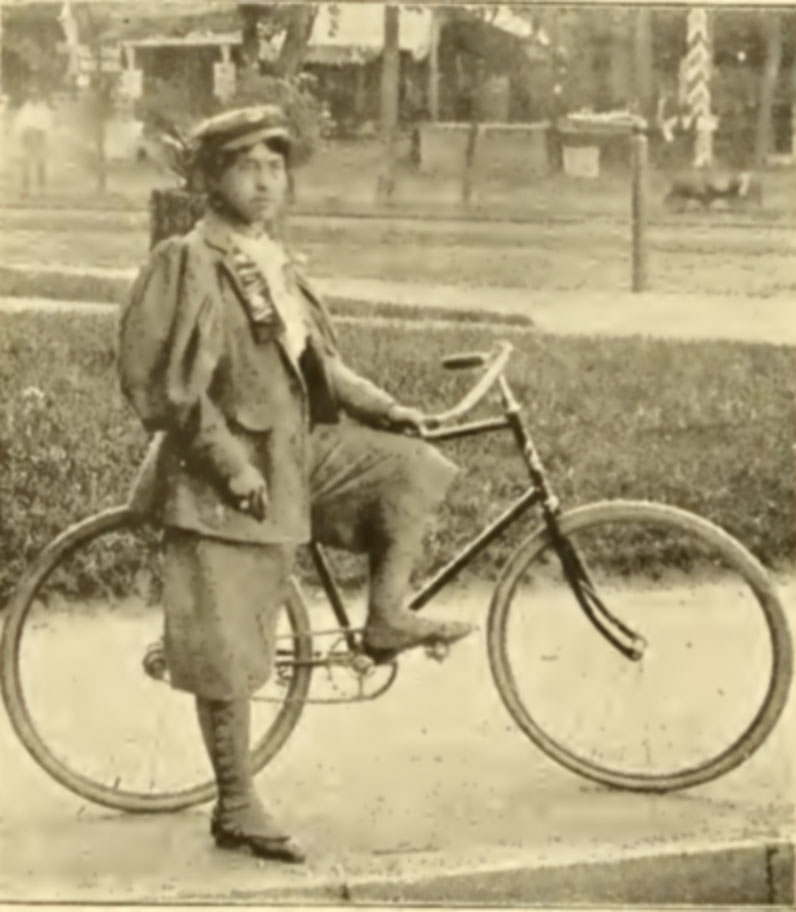
Kittie was an active member of Boston’s all-Black Riverside Cycle Club and a member of the League of American Wheelmen (L.A.W.), predecessor to the League of American Bicyclists. In 1894, after Kittie was already a card-carrying League member, L.A.W. passed a color bar, which prevented people of color from acquiring League membership. A year later in 1895, Kittie attended the League’s national meet in Asbury Park, where she received a mixed reception. She was initially denied entry to the clubhouse due to the color of her skin, but L.A.W. Vice President George Perkins ruled the color bar could only be enforced to cyclists applying for membership after the “white” policy was enacted. Kittie was allowed to keep her membership, but did not receive the same hospitality as her fellow white League members.
Kittie died in 1900 at the young age of 26. Her grave is now part of the Mount Auburn Cemetery African American Heritage Trail in Cambridge, Massachusetts. The League’s color bar was not formally denounced until 1999 under the leadership of its first Black president, Earl Jones.
Annie Londonderry
1870 – 1947, Latvia/Massachusetts
Born into a Jewish family in Latvia in 1870, Annie Cohen Kopchovsky moved to the United States in 1875. In 1894, Annie ensconced herself as the real-life embodiment of Susan B. Anthony’s “picture of free, untrammeled womanhood,” when she set off to circumnavigate the world by bike. Though she was a wife and mother of three, Annie kept her family a secret for most of her journey. Her trip marks one of the earliest examples of cycling sponsorships—in exchange for $100 from the Londonderry Lithia Spring Water Company of New Hampshire, Annie changed her name to Annie Londonderry and placed their advertisement on her 42-pound men’s bicycle.
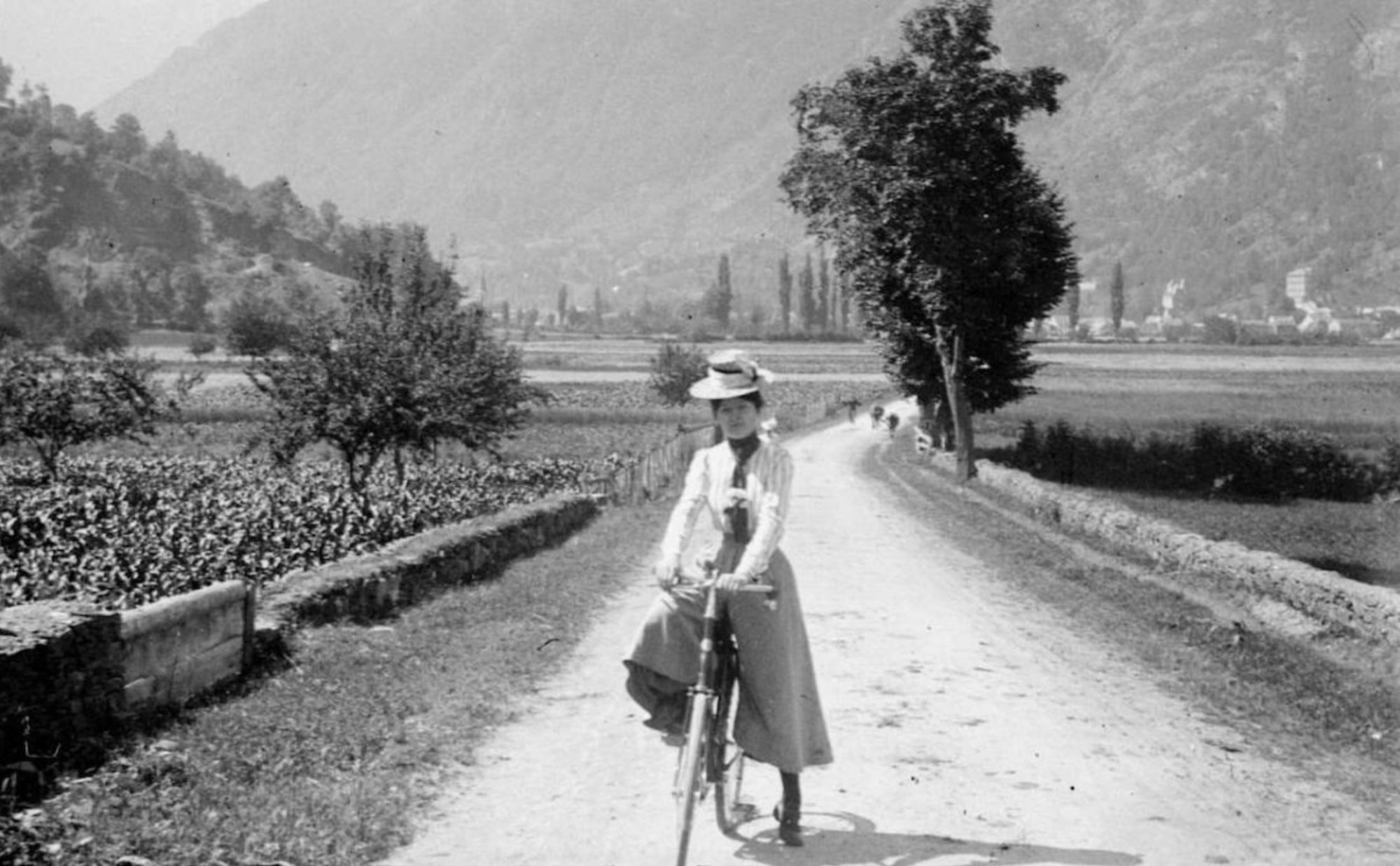
She finished her trip in September 1895, arriving in Boston with a broken arm, an injury she’d suffered from a fall and one that she’d been pedaling with for hundreds of miles. Regarded as the first woman to cycle around the world, Annie and her groundbreaking adventure became synonymous with women’s independence.
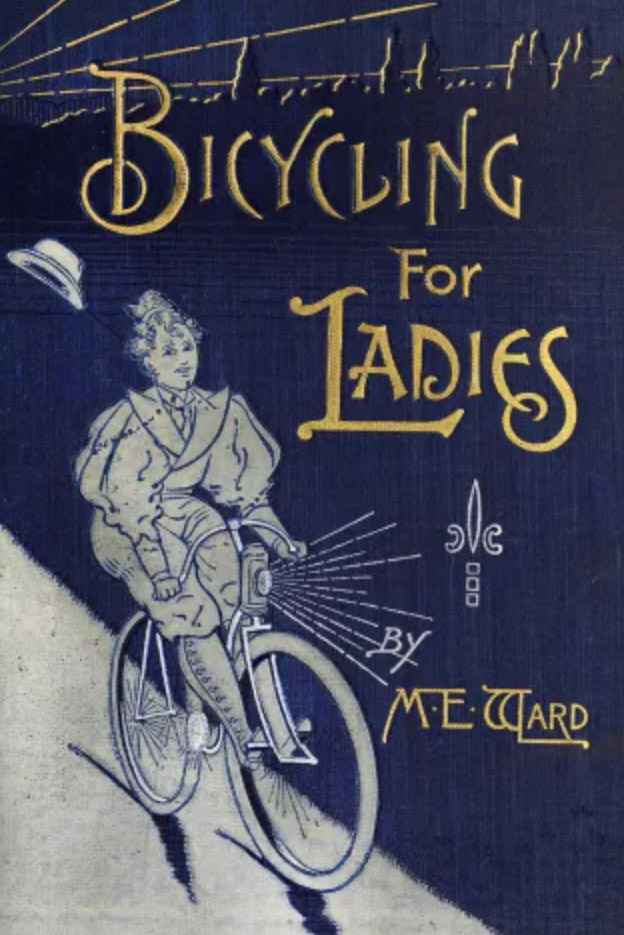
Maria Ward
1863 – 1941, New York
In 1896, Maria Ward published The Common Sense of Bicycling: Bicycling for Ladies, the first book of its kind authored by a woman and created specifically for women. The book empowered women with the resources to learn not only how to ride bikes but also how to dress for the weather, master navigation, and feel confident repairing and maintaining a bicycle. In the introduction to one chapter, titled “Women and Tools,” Maria wrote, “I hold that any woman who is able to use a needle or scissors can use other tools equally well.”
Perhaps one of the more bikepacking-relevant quotes from the book is the following, “Cheerfulness is an invariable factor… for it is unusual, on a bicycle trip, that everything happens as it is expected or has been planned for.”
Marylou Jackson, Velma Jackson, Ethyl Miller, Leolya Nelson, and Constance White
~1928, NYC
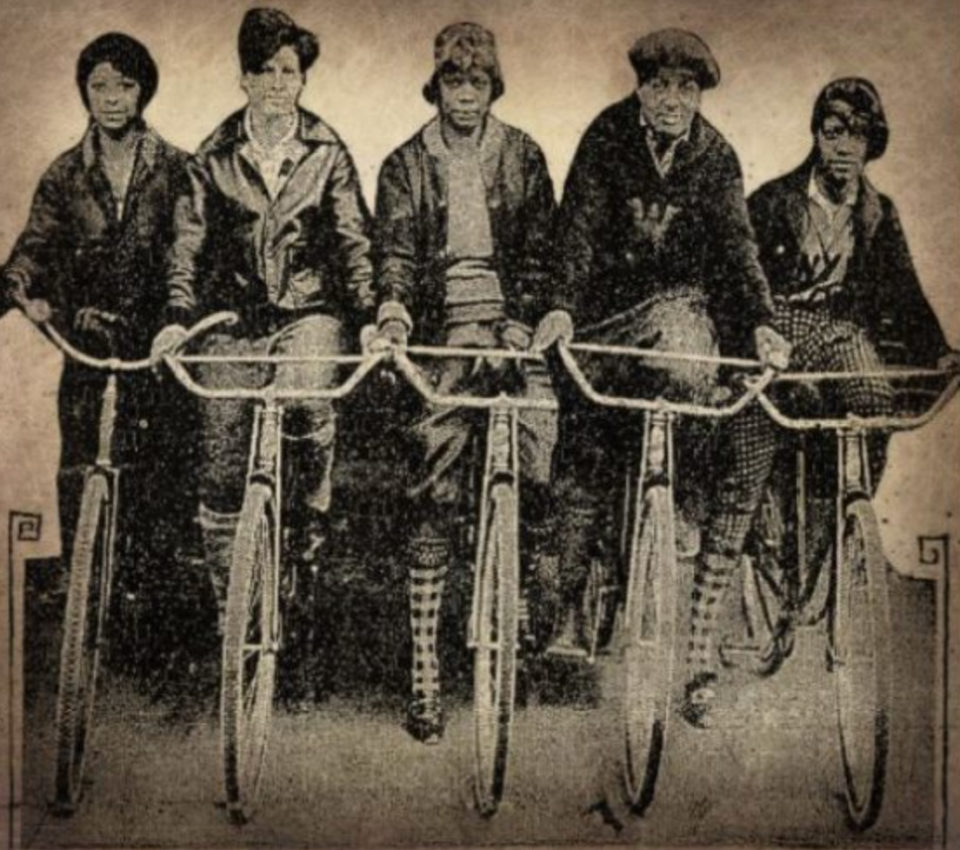
In April 1928, five Black women rode their bikes 250 miles from New York to Washington, D.C. According to an article in The New York Age, Marylou, Velma, Ethyl, Leolya, and Constance took three days to complete the trip. On day one, they pedaled over a century—110 miles to be exact—to Philadelphia, where they spent the night at the local branch of the Young Women’s Christian Association (YWCA). On day two, they rode approximately 40 miles to Wilmington, an easy day by comparison that allowed the group to recover. And on day three, the women rode another 100 miles to Washington, D.C. They arrived late at night and returned to New York by train the following day.
Historian Marya McQuirter discovered the story of these incredible women while conducting research for her Ph.D. dissertation. During a time when so many Black men, women, and children were fleeing the racial oppression and white mob violence that ravaged the South, these women boldly and intentionally pointed their handlebars south for the “love of the great out-of doors.” The women may also have set the stage for what we know today as FKTs, or fastest known times. According to McQuirter, they challenged other women 21 years and older to complete their route in a shorter amount of time.
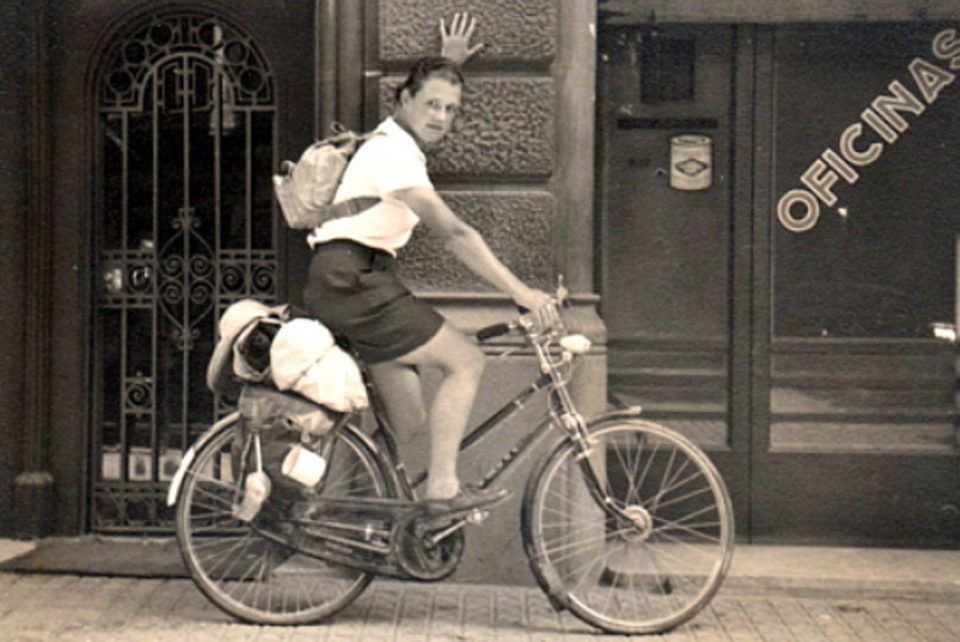
Dervla Murphy
1931 -, Ireland
Born in 1931, Dervla Murphy first garnered international attention when she published Full Tilt, a first-person account of her 1963 long-distance bike tour from Dunkirk, Ireland, to Delhi, India. Pedaling alone on a single speed bicycle, Dervla—then 32 years old—rode through Iran, Afghanistan, and Pakistan. Her book details the joys, but also the many adversities, she encountered, from fighting off wolves and bandits with a pistol, to overcoming heatstroke and dysentery. Dervla’s books sparked a whole genre of travel writing centered around long-distance cycling and have inspired countless women to travel by bike.
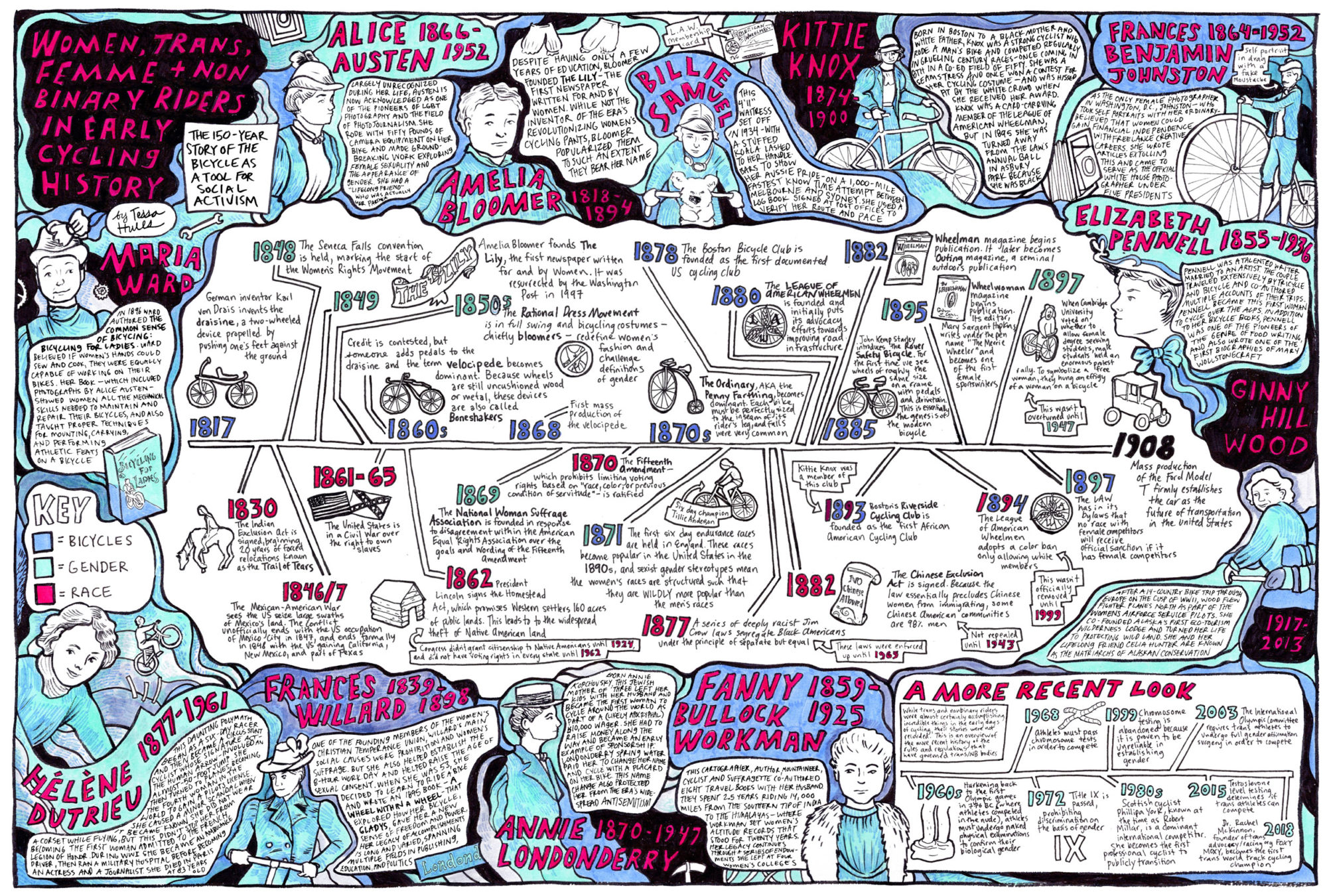
Who inspires you? Give a shout-out to the women who are movers, shakers, and makers in your cycling community this month. Tag @bikepackingcom and #RadWomenBikepacking and we’ll keep an aye out and share a few through our stories.
Please keep the conversation civil, constructive, and inclusive, or your comment will be removed.






